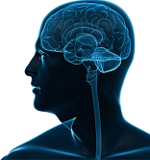Combining Ritalin and Cognitive Behavioral Rehabilitation Shows Promise Following TBI
A treatment protocol combining Ritalin, a stimulant commonly used for ADHD, and a form of Cognitive Behavioral Rehabilitation known as “Memory and Attention Adaptation Training” (MAAT) shows great promise for improving persistent traumatic brain injury (TBI) symptoms, including attention, episodic and working memory and executive function. The research supporting this finding, led by Thomas McAllister and Brenna McDonald at the Indiana School of Medicine, was published in 2017 in the journal of the American College of Neuropsychopharmacology.
Dr. McAllister is a past president of the American Neuropsychiatric Association and was formally director of neuropsychiatry at Dartmouth Medical School. (Dr. McAllister presented at a TBI law seminar organized by the author of this blog.) One of Dr. McAllister’s collaborators on the article was Laura Flashman, a neuropsychololgist at Dartmouth.
The study divided 71 participants into four groups, one combined Ritalin with MAAT, one combined Ritalin with a “drill and practice” rehabilitation approach known as “Attention Builders Training” and two combined the two forms of rehabilitation with a placebo. After six weeks the researchers found that participants in the Ritalin/MAAT group showed significantly greater improvement in word list learning, nonverbal learning and measures of attention-related and executive function.
The Memory and Attention Adaptation Training is a intervention also used to assist patients with cognitive issues following breast cancer chemotherapy, (“Chemobrain”) the topic of my last blog post. This therapy is designed to help individuals in four areas; education, self-awareness, stress management and cognitive compensatory strategies.
- The first area is a common trait of any cognitive behavioral therapy and is put in place to inform survivors of the other factors, such as stress or age, that can contribute to memory issues.
- The second area, self-awareness, asks patients to self-monitor and record memory failures that bother them.
- The third area, stress management and self-regulation, typically involves relaxation training, “cognitive restructuring” and sleep quality improvement.
- The fourth area, cognitive compensatory strategies training, includes self-instructional training, verbal rehearsal, visualization strategies, keeping an organized schedule and active listening to enhance verbal-auditory encoding.
Many of the best rehabilitation programs already include components of this successful protocol. One caution raised in prior posts is that because of the uniqueness of each TBI, an intervention protocol that works for many people may not work for everyone. In many cases disability is caused by particular injuries requiring particular interventions (for example vision issues and endocrine issues.) Experts at leading rehabilitation centers are typically aware of the full scope of potential causes of disability and can customize treatment protocols to particular findings.

